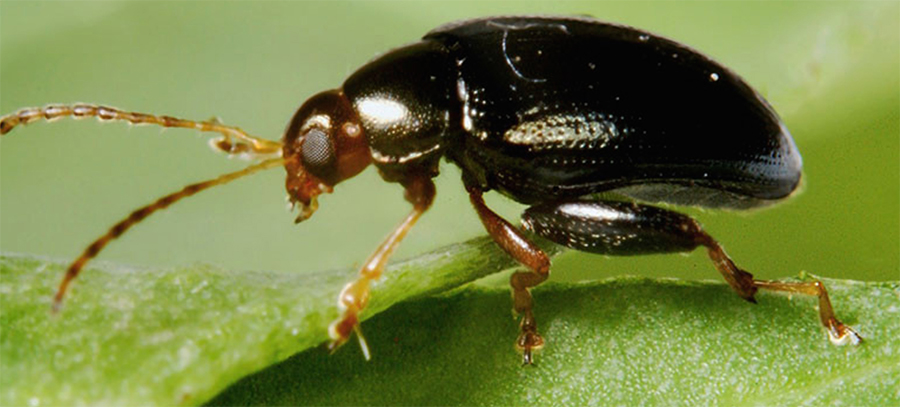
Following the decision by the European Commission to implement a two year ban on the use of neonicotinoid seed dressings in oilseed rape from 1st December 2013, last autumn was the first opportunity to assess the impact of this decision on control of one of our major autumn oilseed rape pests, cabbage stem flea beetle (CSFB).
Dr David Ellerton, Hutchinsons’ technical development director, summarises lessons learnt from surveys this season and suggests strategies to minimise the impact of the pest this coming autumn.
The weather last autumn was very mild compared to the 30 year mean and September was particularly dry with an average of only around 10% of the mean monthly rainfall. This meant that many oilseed rape crops struggled to grow due to moisture stress and this, combined with high levels of flea beetle due to warm temperatures, meant that the risk of pest damage to oilseed rape was very high in many parts of the UK.
Insecticide Resistance
Despite increased use of pyrethroids applied for control of flea beetles, these were in many cases largely ineffective due to either overwhelming numbers of flea beetles or KDR resistance which had been identified as widespread in adults and larvae tested the previous autumn and spring and confirmed in adults tested last autumn.
In some cases pymetrozine, applied mainly for peach potato aphid control may have had some effect. Eventually, in late September two further options became available – a label clearance for thiacloprid for use in the autumn and a 120 emergency clearance for acetamiprid. However in most cases this came too late for applications to save already seriously damaged crops.
Initial estimates from an AHDB funded survey at the end of September estimated losses of 2.7% of the winter oilseed rape area in England and Scotland, equivalent to some 18,000 ha. However there was a significant variation between regions with the East and South East most affected and counties such as Herts, Cambs, Beds and Hants reporting up to 40% crop loss. In fact many crops were destroyed even before reaching the accepted threshold of waiting until ‘Adults have eaten over 25% of leaf area at the cotyledon to two true leaf growth stage or when adults have eaten over 50% of the leaf area at the 3–4 true leaf stage.’
AHDB also concluded that crops drilled early up to mid-August, established quickly before dry weather set in and were often able to grow away from the pest while late drilled crops at the end of September were also often less affected as beetle migration had fallen by this time and rain fell soon after drilling. Most affected were crops sown at the traditional time of late August/early September which went into dry seedbeds at peak beetle migration.
Impact Survey
Hutchinsons’ staff carried out a survey amongst agronomists to gain a greater understanding of the impact of flea beetles this season. In total there were 97 agronomist respondents, covering an area representative of circa 15% of OSR grown in the UK - from Cornwall to Fife in Scotland - enabling a strong countrywide representation of the problem to be drawn.
